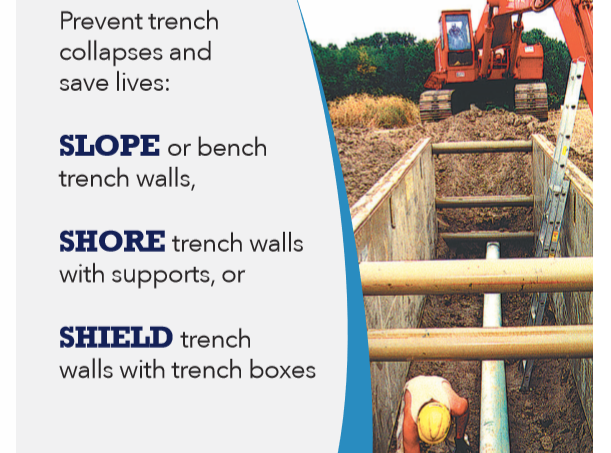Trenching and excavation are widely recognized as among the most hazardous construction operations, resulting in an average of two deaths per month and hundreds of injuries each year due to trench collapses. OSHA has addressed construction-related trenching and excavation hazards by developing specific safety standards for the construction industry, making the requirements easier to understand and providing construction employers with various options for classifying soil and selecting employee protection methods.
Cave-ins pose the greatest risk in trenching and excavation operations, and are much more likely than other excavation-related accidents to result in worker fatalities. Other potential hazards include falls, falling loads, hazardous atmospheres, and incidents involving mobile equipment. One cubic yard of soil can weigh as much as a car.
There are many factors in determining the proper protective systems to reduce or eliminate trenching and excavation hazards, including soil classification, depth of cut, water content of soil, changes due to weather or climate, surcharge loads (e.g., other materials to be used in the trench) and other operations in the vicinity. Trenching protective systems include:
- Benching – cutting the sides of an excavation to form one or a series of horizontal levels, or steps, usually with vertical or near vertical surfaces between levels;
- Sloping – cutting back the trench wall at an angle inclined away from the excavation;
- Shoring – installing aluminum hydraulic or other types of supports to prevent soil movement;
- Shielding – using trench boxes or similar types of supports to prevent soil cave-ins.
For additional information on trenching and excavation safety, visit OSHA’s Trenching and Excavation webpage.
Upcoming OSHA #3015 Excavation, Trenching, and Soil Mechanics Classes

